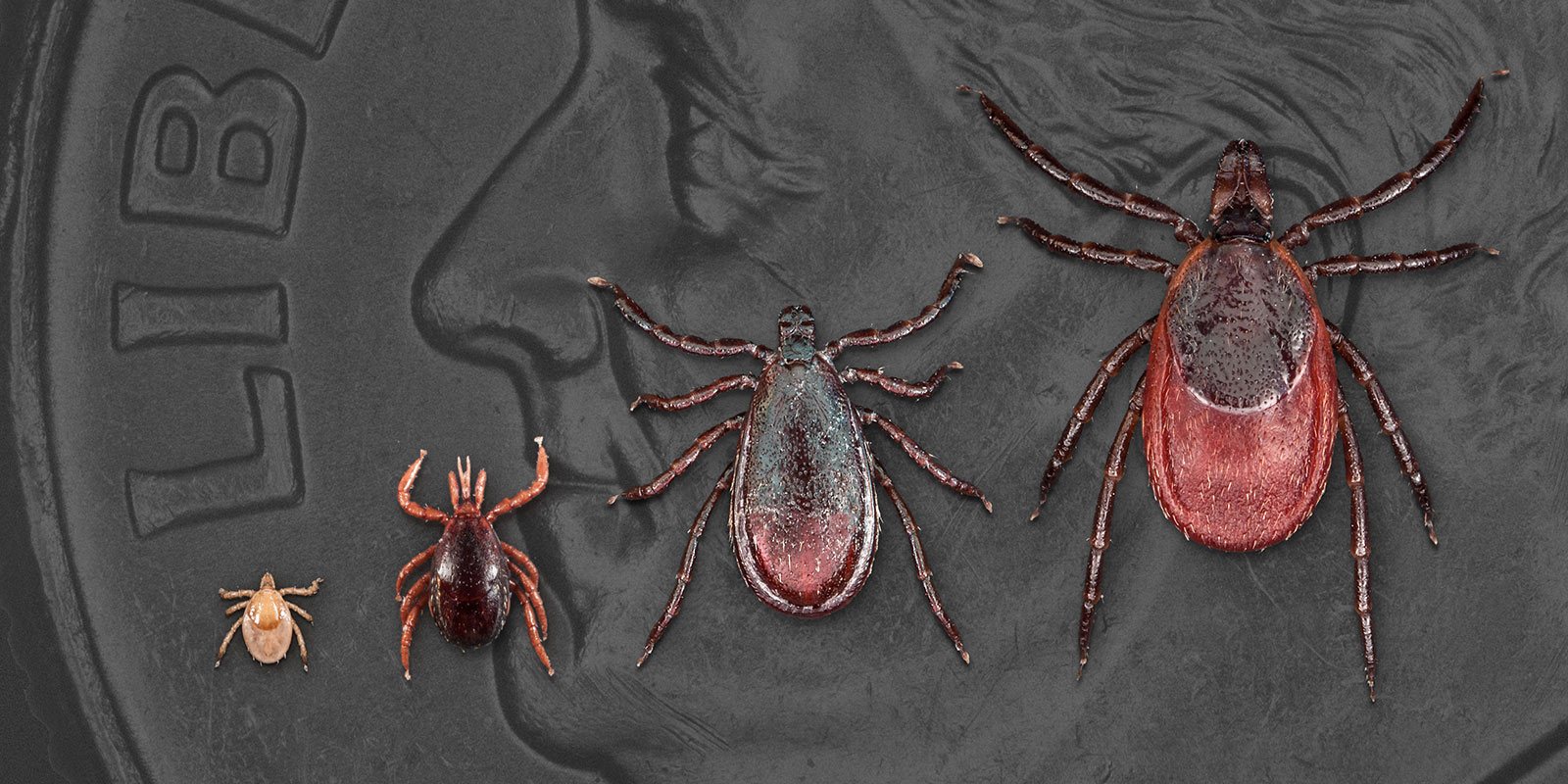Ticks: Preparation is the best prevention
By Tina Luster and Kendall Gutt
Exploring nature means you’ll be interacting with, well, nature. And ticks can be a part of that interaction. In fact, ticks are active year-round in Sonoma County and surrounding areas.
Learning about ticks can make encountering them in nature a little less scary.
 Shown are the relative sizes of several ticks at different life stages.
Shown are the relative sizes of several ticks at different life stages.
(Photo courtesy of Centers for Disease Control and Prevention.)
Ticks in California
Ticks are arachnids – in the same family with spiders, mites and scorpions. They have eight legs and typically have a teardrop-shaped body. They vary in color and pattern.
While six species out of 48 in California attach themselves to humans, just one of those – the Western black-legged tick (Ixodes pacificus) species – carries Lyme disease. That said, California is considered endemic for Lyme disease. Some areas of the county can be more prevalent for ticks carrying Lyme than others.
Other ticks can carry a variety of diseases. Many have similar symptoms: fever, fatigue, headaches, joint pain, rashes and aches. Most occurrences can be treated with antibiotics, but it's important to catch it early. If you develop a fever or a rash after hiking, call your doctor.
 Two adult female blacklegged ticks are shown on a hiking boot.
Two adult female blacklegged ticks are shown on a hiking boot.
(Photo courtesy of Centers for Disease Control and Prevention.)
Preparation is the best prevention
- Stay on the trail. Ticks hang out in tall grasses.
- Wear a long-sleeved shirt and long pants that are fitted, but not too tight. “Flowy” clothing may brush up against vegetation and give ticks a free ride.
- Wear light colors so ticks are visible if they are crawling on your clothing.
- Insect repellants and insecticides may be helpful.
- Stop a tick from latching onto your skin by checking your clothing and exposed skin frequently during your hike.
- Check your clothing and exposed skin before getting in your car to go home. Ticks can become unwanted passengers in your car and can attach to you days later.
- Once home, immediately put your hiking clothes in a clothes dryer for at least 20 minutes on high heat. Don’t just throw them in the washer. Ticks must be desiccated to kill them. They survive in wet or moist environments.
- Perform a tick check and take a shower. Check the hidden places on your body: behind or in your ears, on your scalp, under your armpits, in between your toes, behind your knees, in your belly button, between your legs – any place on your body that a tick may be able to hide.
- Continue to check yourself for ticks frequently for several days after your hike.
- Check your hiking shoes and shoestrings, as well as straps on your backpack or trekking poles, before bringing them into your home.
- If you hike with your dog, check for ticks frequently throughout the hike, before you get in your car to go home, once you get home and several days afterward. Tick treatments and collars won’t repel every tick.

This illustration shows how to remove a tick - Ixodes scapularis pictured.
(Photo courtesy of Centers for Disease Control and Prevention.)
If a tick attaches to you
If a tick has attached itself to you, there are easy ways to remove them safely.
- Use a tick key. Put the fat end of the teardrop-shaped hole over the tick and slide it to the skinny end. The tick should pop off easily.
- You can also remove a tick with a sharp, thin pair of tweezers. Place the tip of the tweezers near the mouth and pull the tick firmly away from the skin.
- Don’t twist, crush, squeeze, puncture or jerk the tick loose. Pull it straight up, otherwise, the feeding tube may stay in your skin.
- If you remove a tick that attached itself to you, consider having it tested. Testing isn’t a substitute for a medical diagnosis, but it can show what, if any, pathogens the tick was carrying. Learn more: Bay Area Lyme Foundation.
 An adult female western blacklegged tick, Ixodes pacificus, on a blade of grass.
An adult female western blacklegged tick, Ixodes pacificus, on a blade of grass.
(Photo courtesy of Centers for Disease Control and Prevention.)
Ticks and our ecosystem
Ticks are an important part of our local ecosystem. They are a food source for many species of birds, reptiles and amphibians. In fact, one bird species, guinea fowl, is used by landowners to control large tick populations.
Also, studies show that opossums – North America’s only native marsupial – can consume about 5,000 ticks in a season.
Ecologists use ticks to determine the health of an ecosystem. An increase or decrease of the tick population lets scientists know if other species are struggling or doing well.
The good, the bad and the ugly: Ticks are a necessary nuisance and are here to stay. So, enjoy your time outdoors. And, with a little preparation, come back from your hike tick-free.
Tina Luster is a marketing specialist for Sonoma County Regional Parks.
Kendall Gutt is a former park program assistant for Sonoma County Regional Parks.
Published June 2022 and updated April 2023


 Translate
Translate